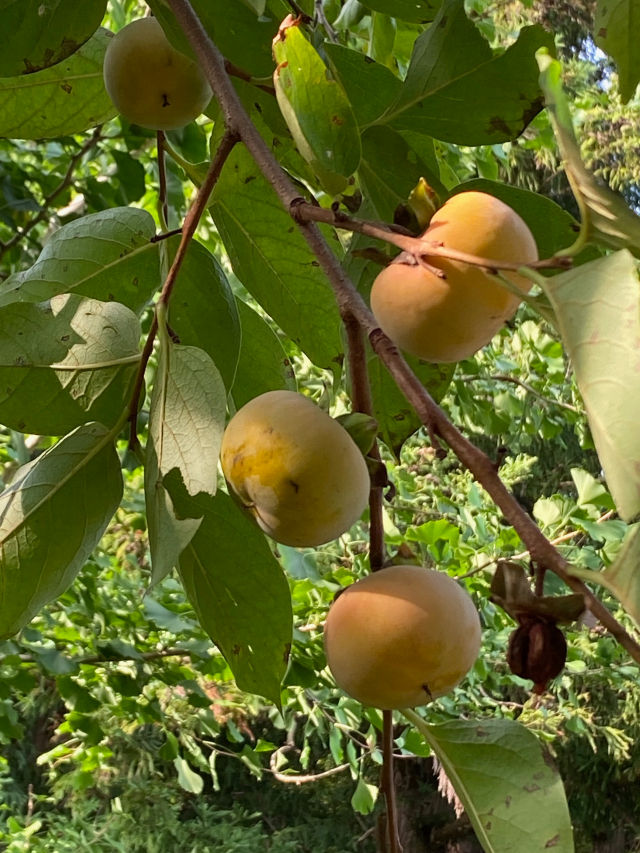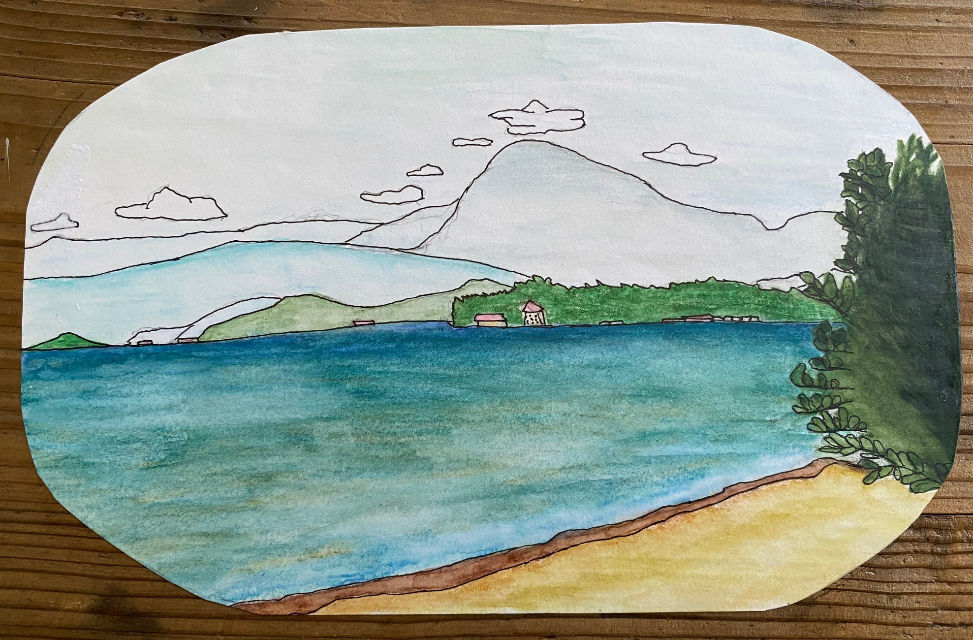VINES
- Rebecca Otowa
- Aug 25
- 4 min read

In a recent blog (“Zen and the Art of Weeding Revisited”) I talked about weeding, a neverending summer activity, and a few things I have learned from it. Well, the learning hasn’t stopped yet, and probably never will. “The world is so full of a number of things, I’m sure we should all be as happy as kings.” (One of my favorite quotes, by Robert Louis Stevenson.) This time I’d like to talk about one particular type of weed, the vines.
We have upward of six separate wild plants in the yard that could qualify as vines – plants that start out of the ground from a hidden root system any old place, but most often near a tree or hedge, and need to climb up anything vertical, or snake along the ground till they find a suitable place to climb; flowers and fruit happen when the vine is a certain height and stability, which varies with every type.
Some vines were actually planted – one example being the orange trumpet vine in my back yard. I originally planted this to twine around another plant I put in, a lilac tree; the lilac tree died, and the trumpet vine went wild all over my back garden, trying to find something to climb up vertically. There are so many new plants from this original vine now, that even if I wanted to put up a support for it, I wouldn’t know where to do so.
Some vines are familiar to us – beans, cucumbers, tomatoes, pumpkin etc. They are planted, and sometimes it’s hard for them to get the idea of climbing up the numerous trellises etc. we put up for them – we have to train them in a certain direction. This is another example, if any more were needed, of cultivated plants being less strong and adaptable than wild plants.
Some vines are encouraged – grape, jasmine and a whole host of others. Some may be helpful or decorative or have other positive qualities, whereas others are simply obnoxious and we always want to get rid of them.
Vines are strong, and tenacious – their strategy for staying alive is the same as other weeds – saturation, or “if this one doesn’t make it, there are plenty more that might.” With most weeds this is accomplished by seeds, thousands of them – I have heard that the average handful of topsoil is up to 50% weed seeds, which are programmed to grow when the temperature and water and angle of sunlight are just right. With vines, there is a network of roots under the soil surface, and every so often this erupts in a plant which then begins to search for a vertical place to grow up. (This strategy is not limited to vines. A wild plant that is very useful, dokudami or fish mint, is not a vine but has numerous very strong roots under the surface instead of seeds.) Some plants rely on the underground network of roots and also put forth seeds, a double-whammy that ensures survival. That’s all these things are trying to do – survive and pass on their genetic information to the next generation.
From one root they grow and grow, sometimes seen, sometimes unseen, till they take over an area, building canopies over the tops of existing trees, stealing their light and nutrients, and sometimes strangling them. (Anyone who has gone through the Japanese countryside, or other places, in summer, and seen how the kuzu vines take over, will know what I’m talking about.) My parents lived in an old house in California where they were constantly having to deal with vines that clogged up their sewer line. Kudos to the vines for finding a reliable source of water (and fertilizer!) although it caused no end of trouble to human occupants.
Various types of vine are ubiquitous sharers of our planet at this stage of our existence. Those of us who notice them may feel that the little, tender shoots at the end of the stalk are very cute and wouldn’t dream of cutting them off in their prime; a feeling that miraculously goes away when the vine has reached a respectable thickness and swarmed all over the support plant. Most baby animals, and plants, are cute; but as the saying goes, all the world loves a kitten but who needs another cat?
I recently had the experience of seeing and interacting with two baby girls, both around 8 months-1 year old. This age, up to the end of toddlerhood, is one of my favorite ages (another being the latency period of 8-10 years old) because toddlers and babies are so courageous, relentlessly experimenting with their world whenever they are allowed to by their 20-foot-tall caretakers. I’m particularly taken with watching when something new is introduced into the environment, be it food or a new toy, or whatever, introduced gently so it won’t be coercive – they can sense this right away. The little attention is caught and held by this, and nothing will do but it must be experienced in as many ways as possible.
When I was a young mother, one of the best suggestions I ever received was to take something new along on a trip and keep it a secret until the child began to fuss (with boredom; it won’t work when the child is hungry or tired, and every parent worth his or her salt knows the difference among these) and then surprise them with the new object. This always worked, to give them something new to do and stave off the boredom of an endless plane flight or car trip for a little longer.
I seem to have segued from tender shoots of vines to tender shoots of humans; anyway, vines are another thing I can look at and learn from even as I am ripping them out. It’s a little less conscience-stricken of an activity, when I know that the hidden roots will take over and present me with a new crop very soon. Vines are like that. They won’t go away.



Comments